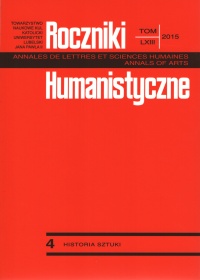Hercules in painting of Spanish golden age
Abstract
Hercules Theme lovingly picked by the golden age of Spanish artists can be argued that this character was of paramount importance in the iconography of Spanish Art. Principals decorating their residences with works showing the hero, approached the current humanistic thought of the biggest contemporary art centers. In addition, through the characteristic qualities of Hercules, they propagated the values of the ruling classes. The authors of images presenting (showing) performances of Hercules were able to reach for inspiration to mythology, bypassing censorship. The subject of Hercules was a real challenge for the artists, who portrayed the hero’s stories illustrating the iconographic programs concerning, at the same time, issues of politics, faith and history.
References
Angulo Íñiguez D., La mitología en el arte español: del Renacimiento a Velázquez, Madrid 2010. Bastús y Carrera V.J., Diccionario histórico enciclopédico, t. IV, Barcelona 1831.
Gómez Martín L.J., Zurbarán y el Salón de Reinos, Madrid 2010.
Grimal P., Słownik mitologii greckiej i rzymskiej, Wrocław-Warszawa-Kraków 2008.
Lleo Cañal V., Los techos pintados de la Casa de Pilatos, [w:] Velázquez y Sevilla. Estudios, Sevilla 1999, s. 173-181.
López Torrijos R., La mitología en la pintura española del Siglo de Oro, Madrid 1985.
Pacheco F., Arte de la pintura: su antiguedad y grandezas, Sevilla 1990.
Parandowski J., Mitologia, Poznań 1989.
Pascual C., El libro de Oro de Sevilla, Sevilla 1988.
Copyright (c) 2015 Roczniki Humanistyczne

This work is licensed under a Creative Commons Attribution-NonCommercial-NoDerivatives 4.0 International License.





